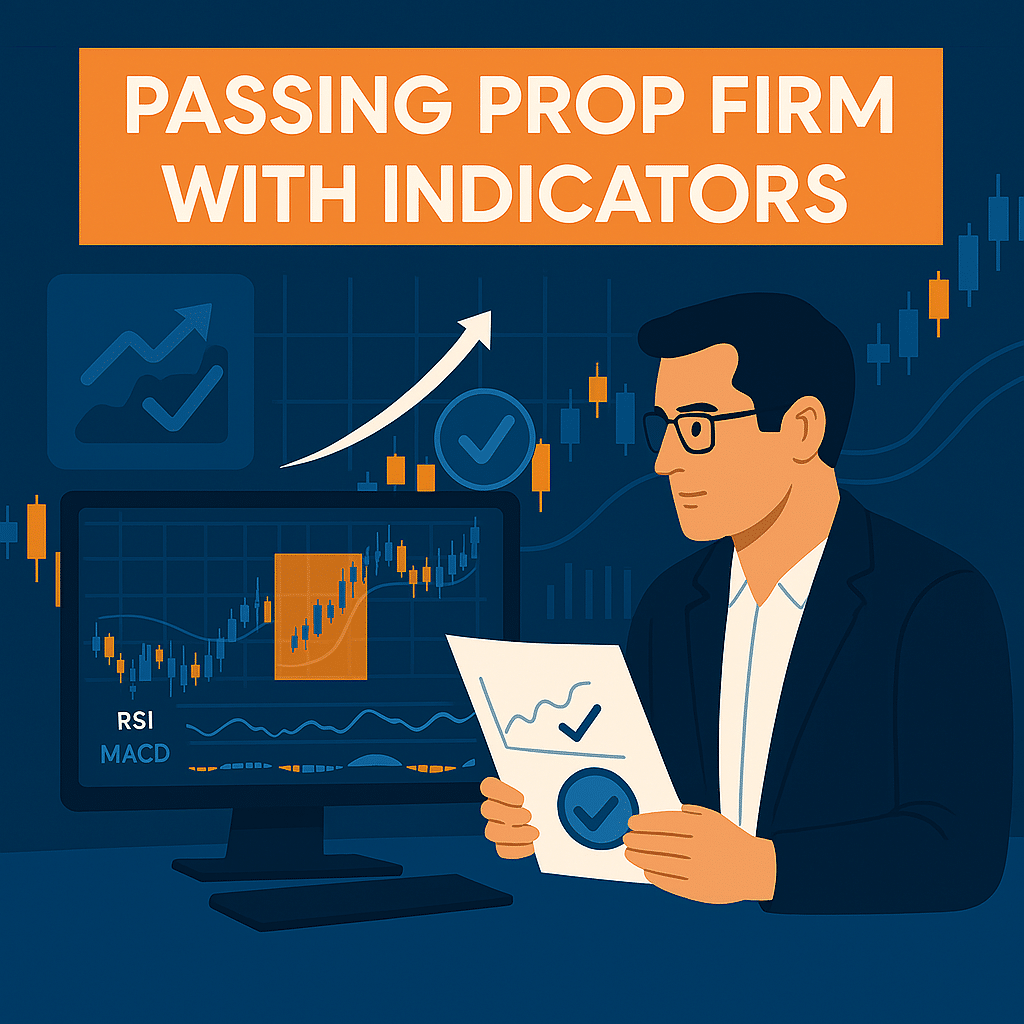Passing Prop Firm with Indicators: Best Indicators for Passing Prop Challenges
Using the right tools is essential for any trader aiming to succeed in proprietary trading evaluations. One powerful way to increase your success rate is by strategically applying technical indicators. In this guide, we explore how passing prop firm with indicators can improve your edge, minimize risk, and optimize your performance throughout the challenge process.
Many traders overcomplicate their setups or rely on gut feelings. But with the right combination of indicators and trading discipline, passing evaluations at firms like Larsa Capital becomes much more attainable.
Why Indicators Matter in Prop Firm Challenges
Prop firm challenges are designed to test both profitability and discipline. You’re expected to follow strict rules, manage risk precisely, and maintain consistency. Indicators help by:
- Providing objective trade entries and exits
- Avoiding emotional decisions
- Clarifying market conditions (trending vs. ranging)
- Supporting risk management
With clear metrics and defined signals, indicators serve as a roadmap in volatile markets.
Characteristics of a Good Indicator Strategy
Before diving into specific tools, make sure your indicator setup meets these standards:
1. Simplicity
Too many indicators can create analysis paralysis. Stick with 2–3 complementary tools.
2. Rule-Based
Every indicator should serve a purpose. Define your entry, exit, and stop-loss logic based on its signals.
3. Adaptability
Your indicators should work across multiple instruments and timeframes, especially during evaluation phases.
4. Compatibility
Combine indicators that balance trend detection with momentum or volatility. Avoid overlapping tools that repeat similar signals.
Top Indicators for Passing Prop Firm Challenges
Moving Averages (MA)
A classic tool for trend-following strategies, moving averages provide directional bias. The 50 EMA and 200 EMA are especially useful in identifying major trends and dynamic support/resistance.
Use Case:
- Trade in the direction of the moving average crossover
- Avoid counter-trend setups during the challenge
Relative Strength Index (RSI)
RSI identifies overbought and oversold conditions, helping you time entries during retracements or breakouts.
Use Case:
- Look for RSI divergence for early reversal signals
- Combine with MA for trend confirmation
Average True Range (ATR)
ATR doesn’t predict direction but helps manage risk by calculating market volatility.
Use Case:
- Set dynamic stop-loss and take-profit levels
- Avoid overexposure in high-volatility periods
MACD (Moving Average Convergence Divergence)
MACD gives insight into momentum shifts and potential trend changes.
Use Case:
- Watch for MACD line crossovers and histogram direction
- Align entries with the prevailing trend
Volume Profile or OBV (On-Balance Volume)
Volume-based indicators help identify institutional interest and validate breakouts.
Use Case:
- Confirm breakout strength
- Avoid false moves during low volume conditions
Passing Prop Firm with Indicators: Strategy Construction
To improve your odds of passing a challenge using indicators:
1. Create a Strategy Template
Combine trend + momentum + volatility indicators for a balanced approach. Example:
- Trend: EMA (50 & 200)
- Momentum: RSI or MACD
- Volatility: ATR for position sizing
2. Backtest Your Strategy
Before taking the challenge, test your indicator-based strategy across various market conditions.
3. Stick to Risk Rules
Firms like Larsa Capital emphasize capital protection. Indicators help reinforce your discipline when used with strict stop-loss and position size rules.
Common Mistakes When Using Indicators
1. Over-Optimization
Traders often tweak indicator settings excessively. Stick with commonly accepted values and focus on discipline instead.
2. Ignoring Market Context
No indicator is perfect. Always consider trend strength, upcoming news, and price action in your decision-making.
3. Using Too Many Tools
More indicators can create confusion. Stick to 2 or 3 that serve distinct purposes.
How Larsa Capital Encourages Structured Trading
Larsa Capital values traders who approach challenges with a clear plan. Their rules encourage:
- Using backtested, indicator-based strategies
- Staying within drawdown and daily loss limits
- Managing trade frequency and risk
With a transparent evaluation process, Larsa Capital rewards strategy and consistency over luck or aggression.
Subheading Featuring the Keyphrase: Using Indicators for Passing Prop Firm Challenges
The key to passing prop firm with indicators lies in choosing the right ones and applying them with consistency. While tools like RSI, EMA, and ATR guide decisions, your ability to follow a disciplined plan will ultimately determine your success.
Tips to Improve Your Indicator-Based Strategy
Journaling Your Trades
Record entries, exits, and the reasoning behind each trade. This habit enhances awareness and consistency.
Using Confluence
Look for areas where multiple indicators agree. For example, an EMA bounce + RSI oversold + MACD crossover offers high-probability setups.
Continuous Optimization
Refine your strategy over time. Don’t switch systems often, but make small adjustments based on real data and journaling.
Final Thoughts: Indicators Are Tools, Not Crutches
Success in prop firm challenges comes from strategy, consistency, and discipline—not just indicators. However, when used correctly, technical tools can guide your trading and improve your win rate.
By focusing on simplicity and mastering a few high-quality indicators, you increase your chances of qualifying for a funded account. Firms like Larsa Capital recognize the power of structured trading, and they reward those who trade with intention.

